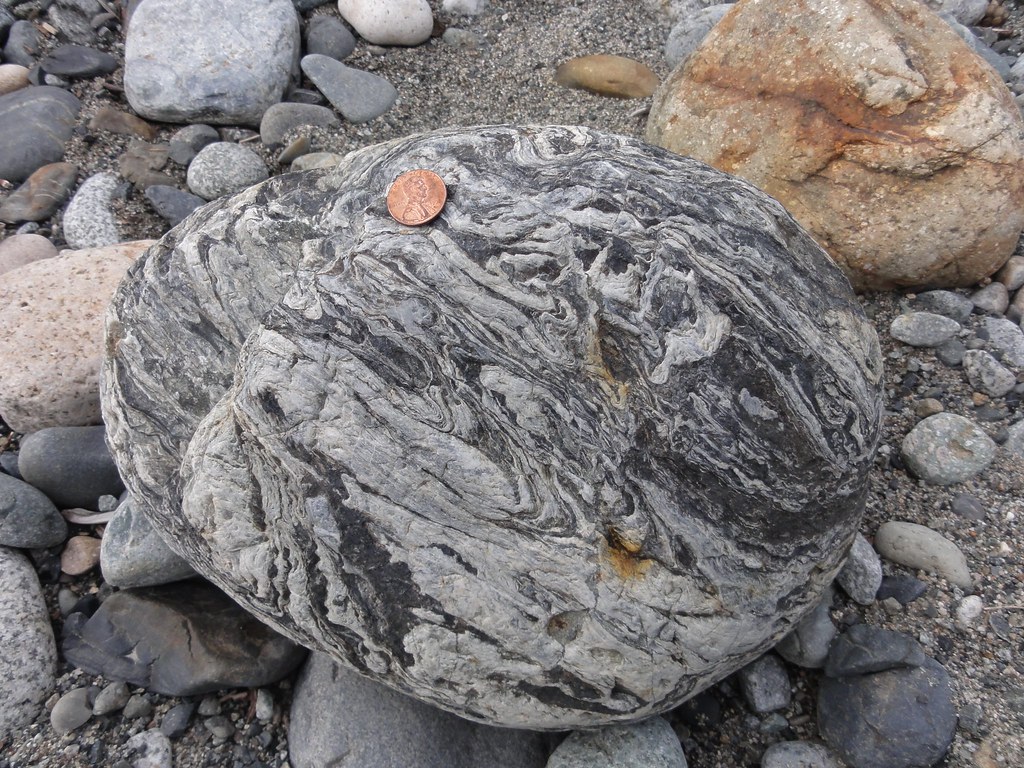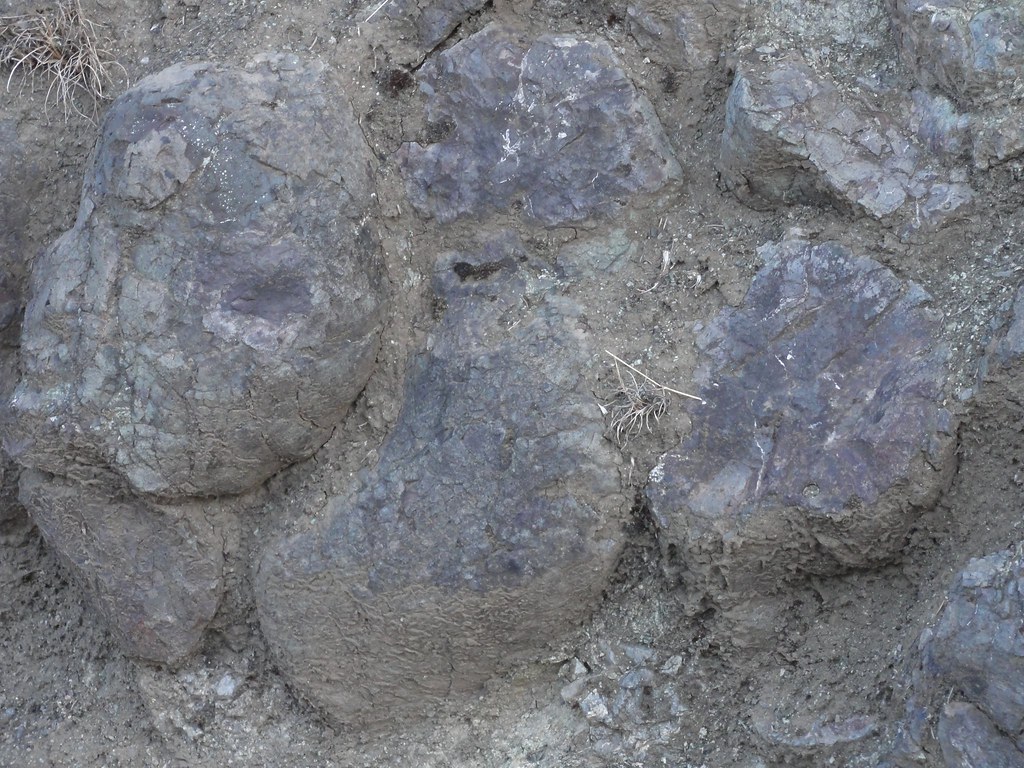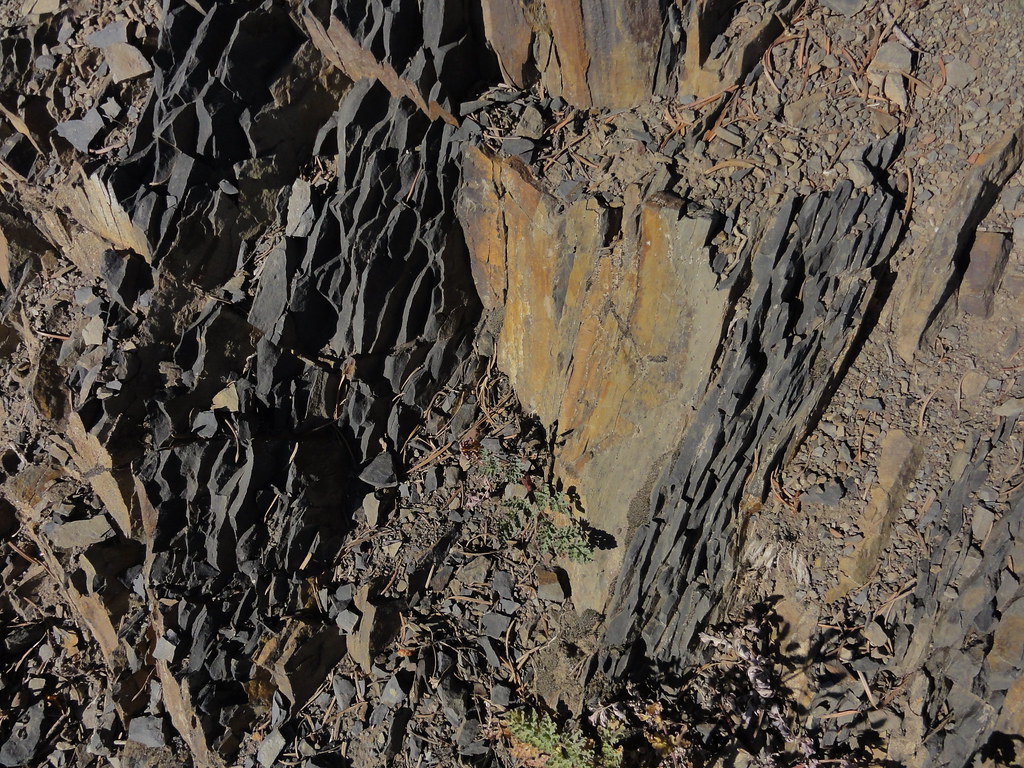This:
 |
| Cascades from Skykomish River, near Gold Bar |
This is why I love the word
subduction. Every time I'm reading about the geology of a region, when I come across that word, I get a tingle down ye olde spine. Because I know we're in for it. I know the landscape's going to be exciting. I know we're in for volcanoes and earthquakes and some really wild metamorphism, accretionary wedges and the whole shebang. It's all there. Tell me we've got a subduction zone on our hands, and you'll see me bounce like a Jack Russell terrier who's just eaten its owner's entire stock of No Doz and chased it down with a case of Full Throttle.
In a subduction zone, you get some really wild rocks, rocks that've been through it, rocks that have been chewed up and spit out, rocks that, were they a letter, would get the post office in deep trouble for the amount of folding, spindling and mutilating they've endured.
 |
| Metamorphic Rock, Skykomish River |
A subduction zone takes your basic rocks and makes them sublime. It pushes them down and raises them up. It takes bits of the seafloor and chucks them up on land.
 |
| Pillow Basalts, Olympic Mountains |
It takes your basic quiet marine shales, which had been resting peacefully in nice horizontal layers on the sea bed, and squeezes and cooks them into
phyllite. And then it hoists them high, standing them on end, and makes mountains of them.
 |
| Phyllite, Olympic Mountains |
Right now, right beneath me, the Juan de Fuca plate is subducting beneath the North American continent. That subduction is the reason I've got land to sit on: over millions of years, subduction zone after subduction zone has formed around here, as oceanic plates meet continental, and as the seafloor goes down, bits of island arcs and seafloor sediments and appreciable chunks of the seafloor itself have gotten plastered on, creating the majority of Washington state, and the mountains that lured me here. It's a dangerous place to live. This beauty does come with risk: chains of violent volcanoes, the certainty of an eventual megathrust earthquake. But it's worth the risk.
I've been seduced by subduction. Looking at the result, who wouldn't be?
 |
| Olympic Mountains |












13 comments:
wow, great eye candy *and* descriptions dana. you have taught me enough that i'm starting to recognize some formations.. like that pillow basalts
Mmmm, nice photos. It's a shame it's so hard to capture phyllitic texture with a camera.
On a drive through the Sierras on a lesser-used, two-lane road, I once insisted that my husband stop because there was this wonderful outcrop of phyllite. He found a spot to pull over, and I ran off to the outcrop and got some samples. Meanwhile, right where he stopped the car, was a big quartz vein, and a gold-mining barge in the creek below the road.
He's still puzzled that I could get so excited over some shiny shale and be indifferent toward a probable gold! bearing! quartz! vein!!!
Oh, well...
I love the way you right. And that gneiss is, well, really gneiss.
It doesn't look that gneiss. In fact it kind of looks like the schist.
Where the Salmonberry Grow - Cascadia, A Place Apart. Neither of the Pacific nor the "North American". Built upon the detris, the rubble if you will, of the collision of the two. Someone should write a book about that.
Oh wait, I am.
Very nicely done.
http://www.flickr.com/photos/gmontjr/5127712134/
We stayed in East Wenatchee on a visit to Washington last year. Our host told me that the mountains in the background of the linked picture are on the Juan de Fuca, while the nearer ones are on the NA plate. I gather from this post that he is correct?
I followed a link from PZ Meyer's place, and I'm glad that I did. I've always loved rocks.
"It doesn't look that gneiss. In fact it kind of looks like the schist."
Oh man, I'm at a loess for words. What are you trying to talus?
I know that sounds like a caliche, but what you said could mean a mélange of things.
A migmatite?
love them!
As a long-time Washingtonian, may I recommend two books by David AltI found fascinating?
Northwest Exposures: A Geologic Study of the Northwest and
Roadside Geology of Washington
Love the Gold Bar area photo.
Nick
Just bookmarked your blog. Great descriptions of both the rocks and your interest in them! If I had it to do all over again, I'd be a linguist instead, but if I had to do over TWICE, I'd be a geologist!
Bra
Thanks for the info on phyllite! It was new to me. Would a bit more squeezing make it schist? Just wondering.
Many years ago a USGS geologist wrote a paper speculating on the economic value added to California by the San Andreas Fault. Something like 5 billion per year or something. Crazy big number. The mountains that are created, the businesses dealing with mineral extraction or emergency supplies, all kinds of stuff.
Now, let's talk about how much economic value a subduction zone creates? Wow. Tourism, mineral extraction, lumber, much more than the SA Fault, don't you think, when you include ALL of the subduction zones world wide?
Fun to think about. Thanks for the post.
Wow, you are a great writer! You're so good at communicating the excitement you feel to the reader! Excellent blog!
Post a Comment